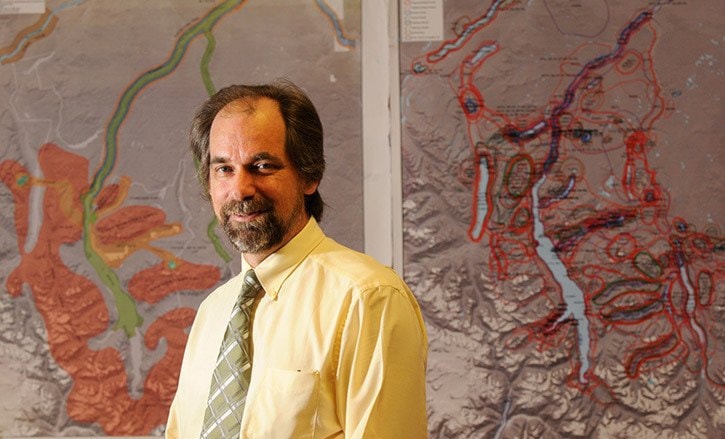Fearlessly wading into the sticky topic of colonization in B.C., professors at the University of the Fraser Valley are offering a certificate on indigenous maps, films, rights and land claims starting next month.
Much of the content of the three-course, month-long program will focus on the Lower Fraser Valley. It will cover the ways in which indigenous lands and resources were taken, and the ways in which indigenous people are reclaiming them.
For instance, maps were a fundamental tool of colonial conquest, said Prof. Kenneth Brealey, a program instructor. The act of delineating reserve land on a map reinforced the idea that First Nations land is only that bit, and not the rest of B.C.
"That's where maps really did their dirty work as far as colonization goes. It's their ability to make visible and cement in a visual record the impression that these reserves are now Indian land, and that's all Indian land has ever been, is these small patches that we have mapped out on the ground and in paper," said Brealey.
These sketches had power.
"Maps in our culture have this at-a-glance authority. When we look at a map, we think that that is the real world," said Brealey.
Over the years, as magistrates and reserve commissioners looked at the maps, they eventually disregarded that native land used to be the whole of the Fraser Valley, B.C. and Canada. This was the first tool that made it easy for settlers to claim non-reserve land as their own.
But maps are also serving as a tool of empowerment to groups now fighting for control of their traditional lands. For example, people use maps to pinpoint resources that indigenous groups use, showing that traditional resources do not follow reserve land borders.
Brealey is one of four instructors for the program, which is in its fourth year and has seen about 45 people pass through it since inception.
Program instructor Prof. Hugh Brody will focus on how film has been used by settlers to depict indigenous people, while indigenous people themselves used film to document land use and First Nations heritage.
Prof. David Schaepe and Naxaxalhts'i (Albert 'Sonny' McHalsie) will attempt to engage students in a debate about the best ways that Sto:lo people might seek a resolution to the "Indian land question," said Brealey. Should it be the treaty process? Or litigation? Or an issue-specific reconciliation surrounding loss of resources? The course will also discuss divisions inherent in First Nations groups across the province.
The certificate program will run from June 17 to July 12, eight hours per day, at the Sto:lo Nation's Cultural Research Center in Sardis. Fourteen people have already registered, with space remaining for UFV students and Chilliwack residents at large. Full details are at www.ufv.ca/geography/programs/landclaims/.
akonevski@theprogress.com twitter.com/alinakonevski